Temple on the second reached the launch site will be in space for experimental | tiangong second | space station _ 14 news
China Aerospace Science and technology group said China's independently developed the "temple on the second" space laboratory, has now reached the Jiuquan Satellite Launch Center, final assembly and testing of the launching site. According to the plan, China will be launched in the third quarter this year, "temple on the second" space lab, this is the second "up to seven" after the flight, China's manned space laboratory the second flight.
"Temple on the second" two tank structure three missions
Manned space laboratory include: "up to seven" rocket flight, "temple on the second" and "Shenzhou 11th" rendezvous and docking test, "temple on the second" rendezvous and docking with the cargo ship, scheduled tasks completed within the first half of next year as a whole.
Space lab mission verify the added cargo and propellant in orbit, as well as medium-term presence of the astronauts and other space station construction and operation of key technology, carried out a large-scale space science and application experiments.
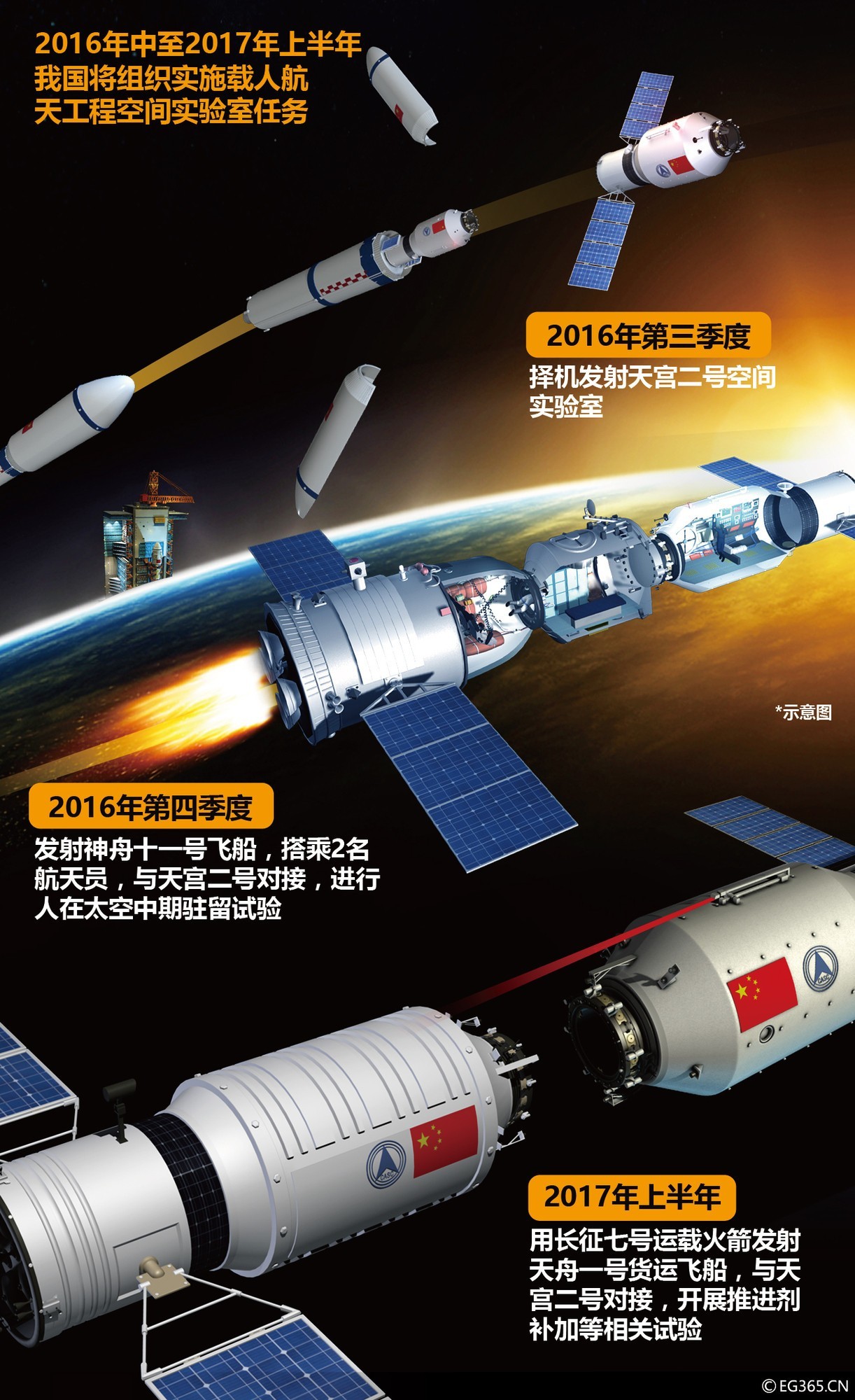
(CFP)
"Temple on the second" space laboratory seen from the shape and "temple on the first", or in resource and module consisting of two class structures, but the content has changed a lot, especially when a lot of research and development of new equipment for the space station construction, during this year's mission will be tested.
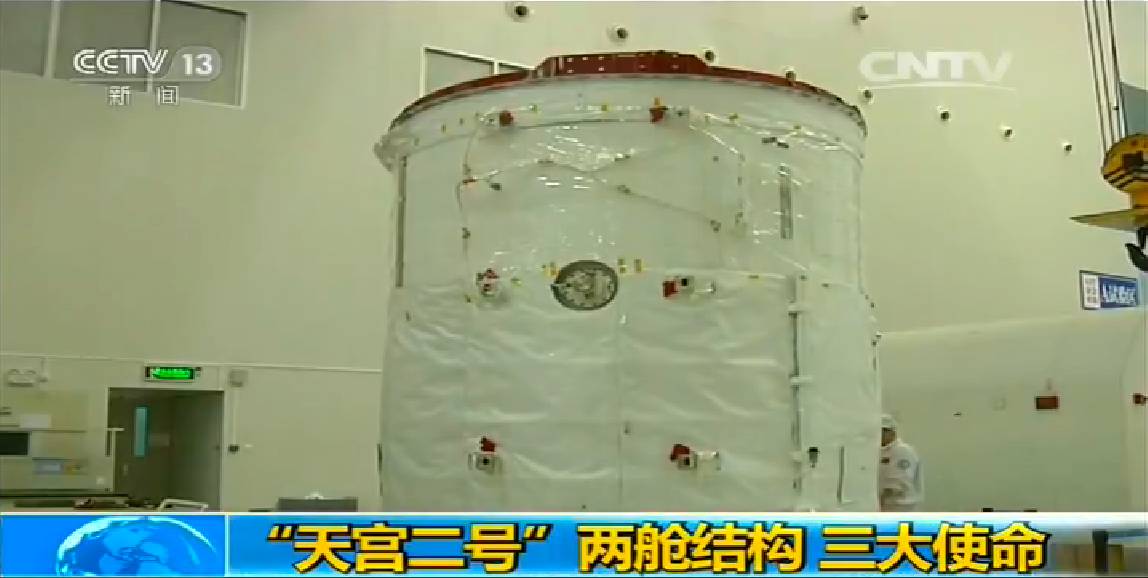
"Temple on the second" resource class
"Temple on the second" resource class for non-sealed structure, main function is to "temple on the second" provide energy and power in space flight; the experimental class is a sealed class, the main function is to provide the astronauts living in space clean, temperature and humidity, suitable for the manned space environment and activities.
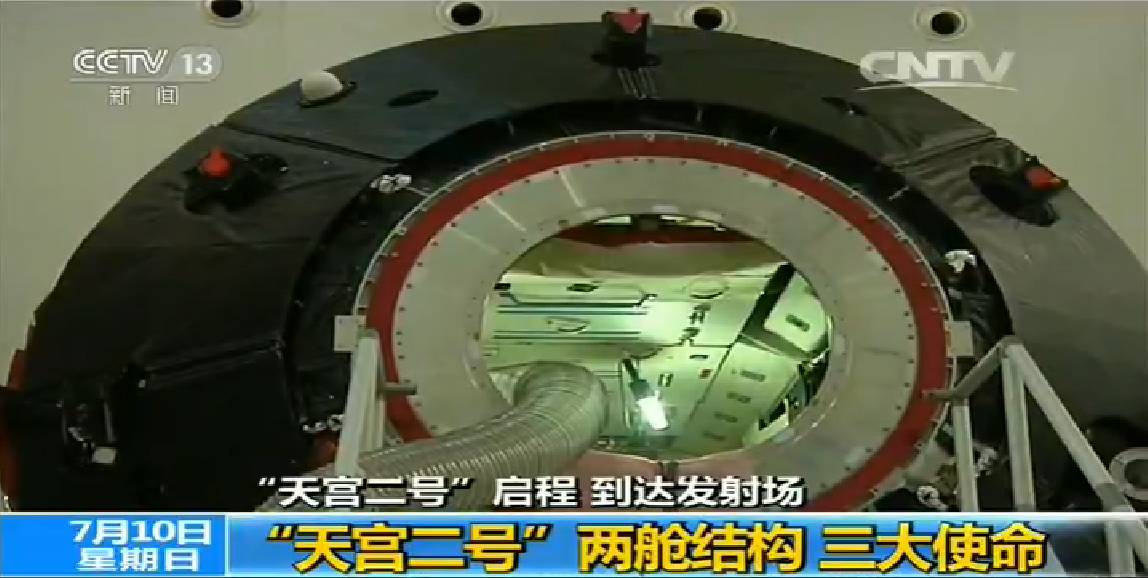
"Temple on the second" laboratory
According to the plan, "temple on the second" will be launched in the third quarter this year, will launch after "Shenzhou 11th" manned spacecraft, the astronaut will take the "Shenzhou 11th" ship visit "temple on the second", and living and working in orbit, verify that the medium-term presence in space related technologies. During this period, the astronauts will also undertake a number of space science and application experiments. Over the next year, "temple on the second" and "day boat" docking the cargo ship, verify that adding key technologies such as the propellants in orbit.
"Temple on the second"-manned the most busy lab space
"Temple on the second" has a very important task in the work, carrying out the mass of the space science and application experiments is, it also marks a new stage in the development of China's manned spaceflight to the application. "Temple on the second" loading device, many are used to conduct space science experiments or some new technology, these devices are called payload on space applications.
This time, the "temple on the second" on various types of experiments to be undertaken to achieve an unprecedented level of 14, called China's manned the busy lab space. Content involving microgravity fundamental physics, space material science, space life science and other fields. Among them, the two need to be directly involved in the operation of the astronauts. There is an international cooperation in joint research projects.
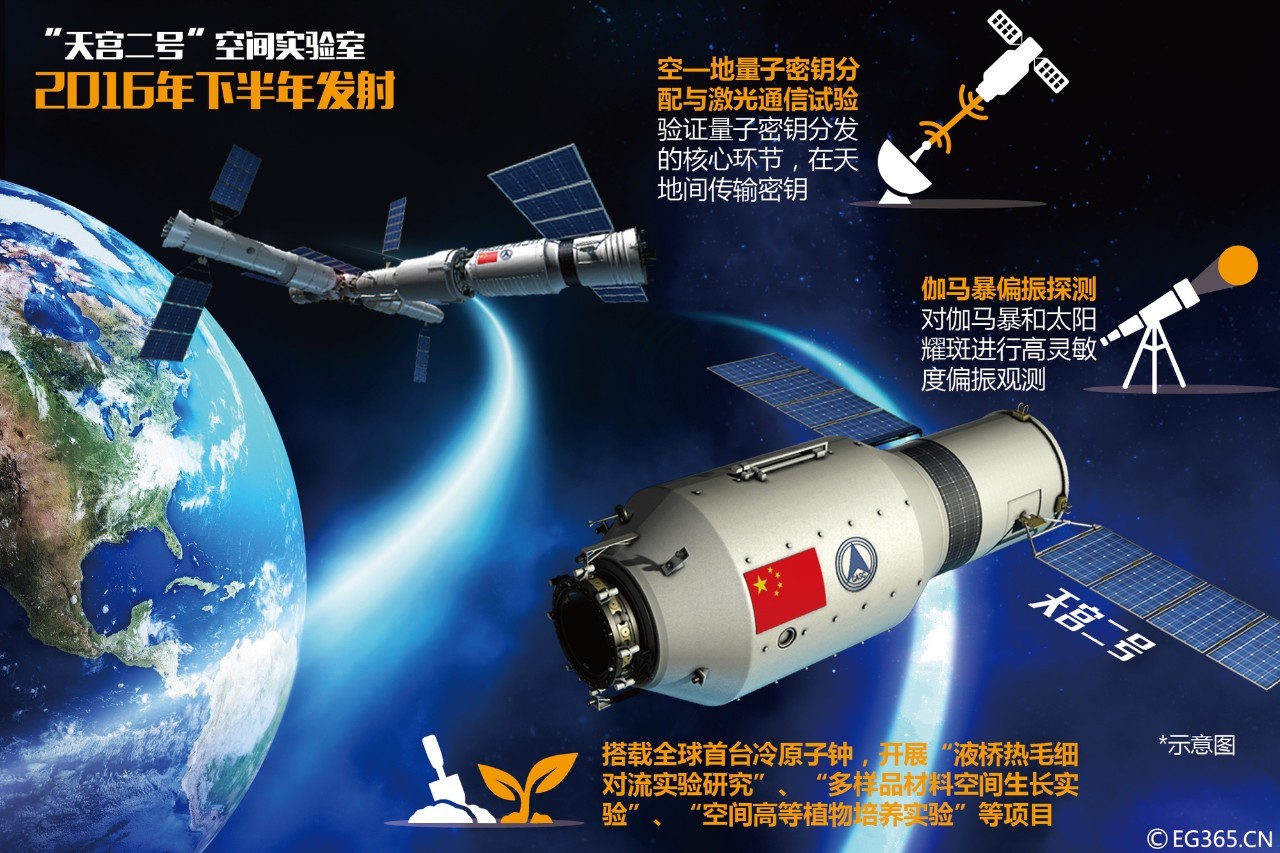
"Temple on the second" more than more than 10 scientific experiments (CFP)
In these experiments, many is the world-leading space science exploration and application of international advanced technology. Among them, the cold atomic clock into space for the first time space, spacecraft autonomous timekeeping accuracy can be two orders of magnitude, greatly improved navigation and positioning accuracy.
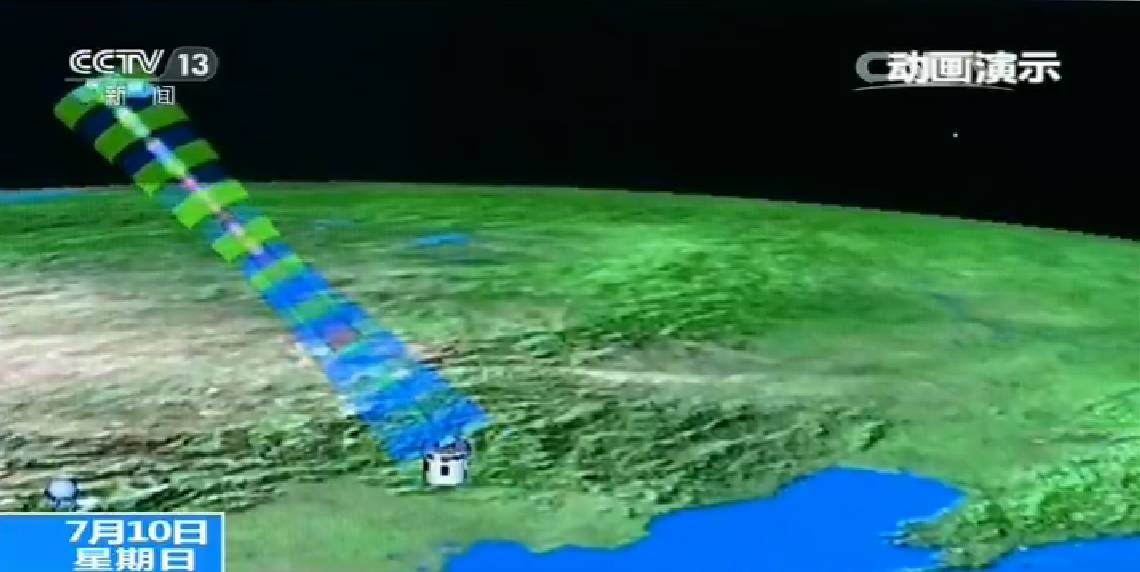
"Temple on the second" launched together with flying small satellites will also be near-distance Imaging observation of separation and release. These tests not only has a high scientific potential, more likely in the future to bring new impetus to China's aerospace technology.
According to reports, the "temple on the second" on-orbit lifetime will be not less than two years, during this time, will carry out a series of space science experiments, space medicine experiments and technical tasks such as validation of the space station, and for China to build a space station in advancing the associated technical validation.
"Temple on the second" how cows? Exclusive to decrypt!
"Temple on the second" is said to be China's first real space laboratory. Then, it and the 2011 launch of "temple on the first" what's the difference? And what technical breakthrough?
"Temple on the second" space lab in "temple on the first" based on the spacecraft, and exactly the same shape, but take on different tasks.
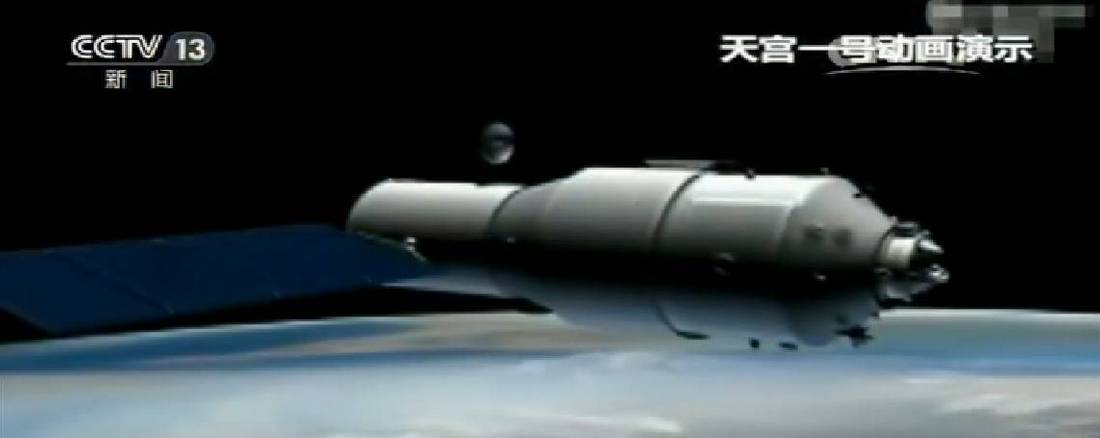
"The temple on the first" primarily and manned with the completion of space rendezvous and docking mission, and "temple on the second" is China's first manned space laboratory with space added capabilities, 30 days to realize for the first time the astronauts reside, the first test of a propellant added technology and other important scientific experiments in space. Therefore, the "temple on the second" compare "temple on the first", did not change appearance, change is the "heart".
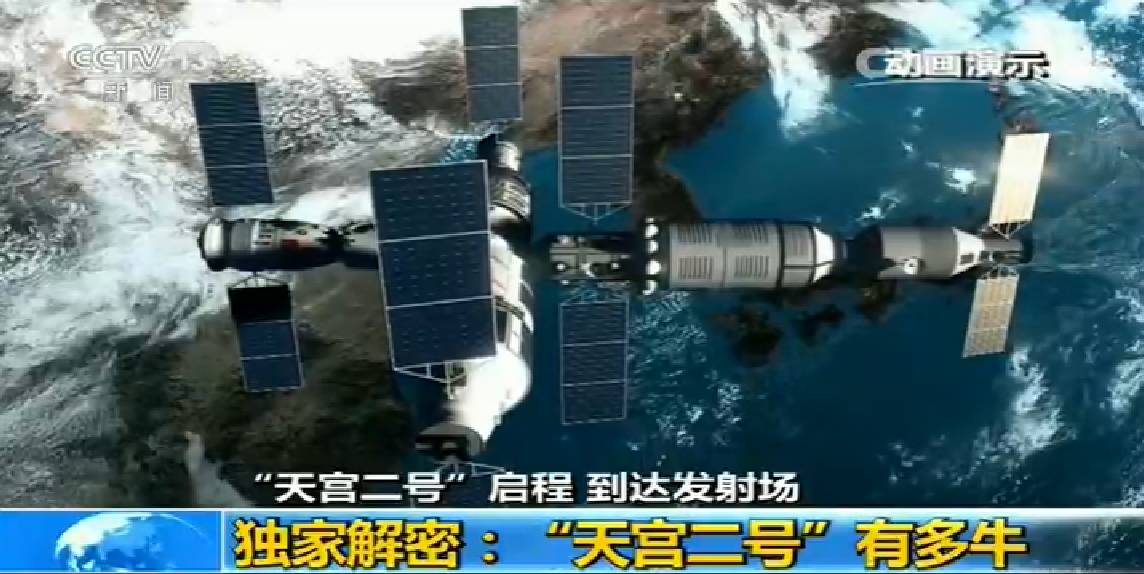
More luxury, not only improve the loading capacity, internal environment better, "temple on the second" more advanced equipment aboard, "temple on the second" aboard a new complete set of scientific equipment for space application system, regardless of quantity and installation complexity, have created the longest previous manned spacecraft mission.
For example, build a liquid circuit verification system for the first time, verify that the maintenance of the space station. Equipped with a robotic arm operation Terminal tester for the first time, human-machine collaborative space in China for the first time on-orbit maintenance test for future space station missions providing technical reserves.
It is worth mentioning that, "temple on the second" system design is modular, which means that it can be quickly replaced when problems occur and in-orbit repair, this space also for the first time in the country.
≠ Space laboratories space station
So, "temple on the second" as a space laboratory undertakes scientific experiments, the station and in the past we often heard any different?
Space laboratory, as the name suggests, is the construction of laboratory in space. This special lab needs to launch unmanned space laboratory, and then manned spacecraft launch vehicles into space, stays in the laboratory of unmanned space rendezvous and docking in orbit, and astronauts from the spaceship into space laboratory work, then take the shuttle to return to Earth after completion. Therefore, our launch "temple on the second", and will be launched "Shenzhou 11th" manned spacecraft, with the "temple on the second" dock to complete construction of the space laboratory.
So, space lab and space station, what difference does it make? "Temple on the second" does that mean that our country will have after the launch space station now? Of course not.
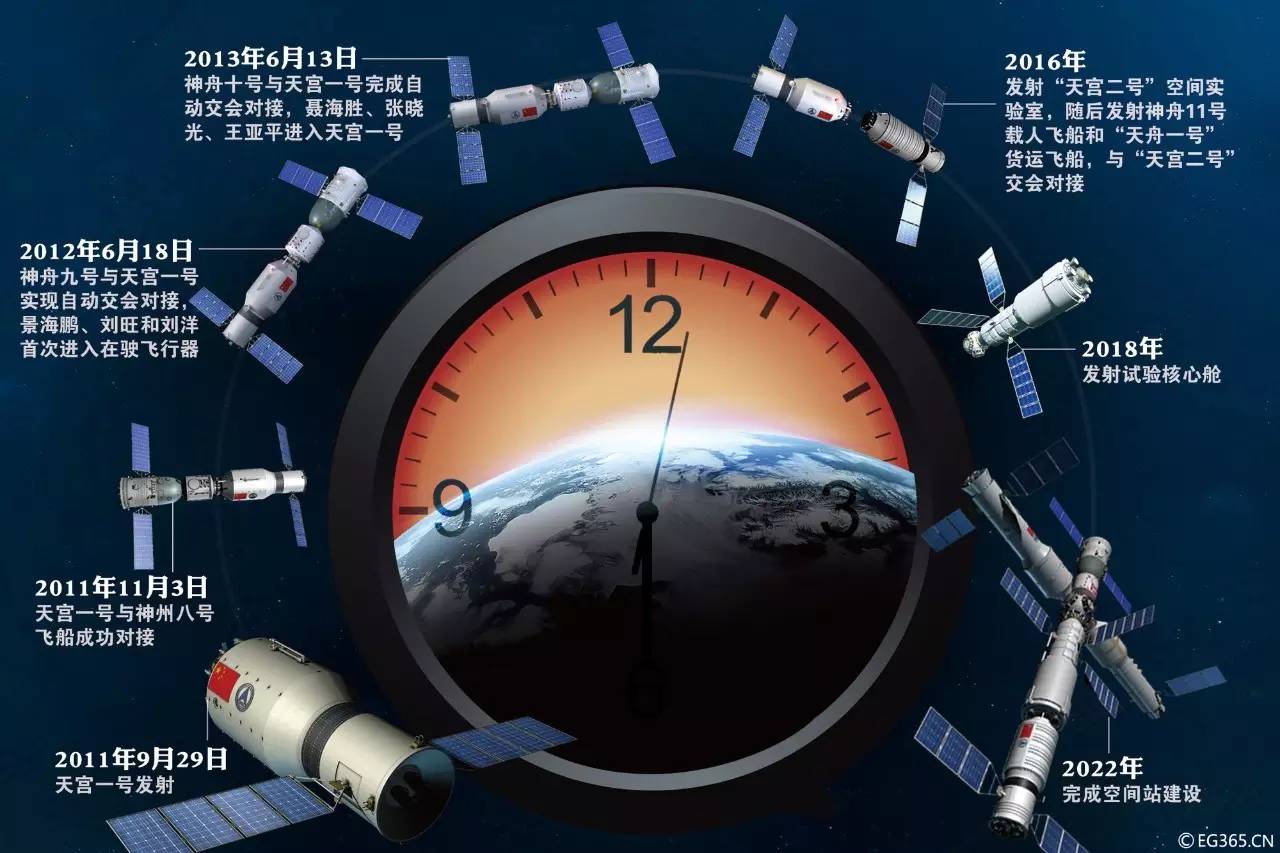
China's space station construction schedule (CFP)
Means available for many of the space station astronaut visits, long-term living and working spacecraft. Including the famous space station launched by the former Soviet-built "salute" space station "Mir" space station, as well as by the United States, and Russia, and Japan, and Canada, and Brazil and the European Space Agency to build the international space station. Greatest feature is the size of the space station and the large, in-orbit operation of time, such as the international space station has worked with humans for 16 years.
So, in short, space laboratory is more like the station's predecessor, was for the development of space stations, transition from a manned spacecraft to test spacecraft for manned space infrastructure. That is, the space laboratory is to construct more complex space station made preparations.
Guess you like
Today, the 12 provinces had heavy rain! "Nepartak" will impact on Jiangsu
Who can "pick up" Octopus Paul to become the next "prediction"?
Android phone users, look over here: delete this malicious program!
The current producer/Chief editor Yang Jihong/Hou Zhenhai
Edit/province Guo Shuang
? CCTV news
Find it useful please praise!
Responsible editor: Xiang Changming SN123
Article keywords:Temple on the second space station
I want feedback
Save a Web page
CCTV
天宫二号到达发射场 将在太空中进行14项实验|天宫二号|空间站_新闻资讯
中国航天科技集团透露,我国自主研制的“天宫二号”空间实验室,目前已到达酒泉卫星发射中心,开展发射场区的总装和测试工作。按照计划,我国将在今年第三季度发射“天宫二号”空间实验室,这是继“长七”首飞之后,我国载人航天工程空间实验室阶段任务的第二次飞行。
“天宫二号”两舱结构 三大使命
载人航天工程空间实验室任务主要包括:“长七“火箭首飞、“天宫二号”和“神舟十一号”交会对接试验、“天宫二号”与货运飞船的交会对接试验,整个任务计划在明年上半年全部完成。
空间实验室任务主要验证货物运输和推进剂在轨补加,以及航天员中期驻留等空间站建造与运营的关键技术,开展较大规模的空间科学和应用试验。

△(图自CFP)
“天宫二号”空间实验室从外形上看和”天宫一号”差不多,还是以资源舱和实验舱组成的两舱结构,但它里面的内容变化很大,尤其是很多为空间站建设研发的新型设备,在今年的任务中都将进行测试。

△“天宫二号”资源舱
“天宫二号”的资源舱为非封闭结构,主要功能是为“天宫二号”在太空飞行提供能源和动力;其实验舱则是一个密封舱,主要功能是为航天员在太空生活提供洁净、温度和湿度适宜的载人环境和活动空间。

△“天宫二号”实验舱
根据计划,“天宫二号”将在今年第三季度发射,之后将发射“神舟十一号”载人飞船,航天员将搭乘“神舟十一号”飞船访问“天宫二号”,并在轨工作和生活,验证太空中期驻留相关技术。在此期间,航天员还将开展多项空间科学和应用试验。而在明年,“天宫二号”将与“天舟”货运飞船进行对接,验证推进剂在轨补加等关键技术。
“天宫二号”——中国载人航天最忙碌的空间实验室
“天宫二号”任务中有一项非常重要的工作,就是要开展大规模的空间科学和应用试验,这也标志着我国的载人航天进入应用发展新阶段。在“天宫二号”装载的设备中,有很多是用来开展空间科学实验或者验证一些应用新技术的,这些设备一起被称作空间应用有效载荷。
这次,“天宫二号”上要进行的各类实验达到了史无前例的14项,堪称中国载人航天最忙碌的空间实验室。内容涉及微重力基础物理,空间材料科学,空间生命科学等多个领域。其中,有两项需要航天员直接参与操作。有一项是国际合作联合研究的项目。

△“天宫二号”开展十余项科学实验(图自CFP)
在这些实验项目中,很多都是处于世界前沿的空间科学探索领域和国际先进的应用新技术领域。其中,首次进入太空的空间冷原子钟,可以将航天器自主守时精度提高两个数量级,大幅提高导航定位精度。

同“天宫二号”一起升空的伴飞小卫星,还将对分离释放过程进行近距离成像观测。这些试验不仅具有很高的科学研究价值,更有可能在未来对我国的航天技术带来新的推动。
据介绍,“天宫二号”在轨寿命将会不少于两年,在此期间,将开展一系列空间应用科学实验、航天医学实验、空间站技术验证试验等任务,为我国建造空间站提前开展相关技术验证。
“天宫二号”有多牛?独家解密!
“天宫二号”被称为是我国首个真正意义上的空间实验室。那么,它与我国2011年发射的“天宫一号”有什么不同?又有哪些技术上的突破呢?
“天宫二号”空间实验室是在“天宫一号”基础上研制的航天器,外形完全相同,但却承担着不同的任务。

“天宫一号”主要是和载人飞船配合完成空间交会对接实验任务,而“天宫二号”则是我国第一个具备太空补加功能的载人航天实验室,要第一次实现航天员30天驻留、第一次试验推进剂太空补加技术等重要的科学实验。所以,“天宫二号”相比“天宫一号”,没变的是外形,变化的是“内心”。

不仅装备更豪华、装载量提高、内部环境更好,“天宫二号”上搭载的设备也更先进,“天宫二号“上搭载了全新配套的空间应用系统的的科学设备,无论是数量还是安装复杂程度,都创造了历次载人航天器任务之最。
例如,首次搭建了液体回路验证系统,将验证空间站维修技术。首次搭载了机械臂操作终端试验器,将第一次开展我国人机协同太空在轨维修试验,为以后空间站任务提供技术储备。
值得一提的是,“天宫二号”的系统设计是模块化的,也就是说它出现问题时可以快速更换和在轨维修,这在国内空间领域也属于首次。
空间实验室≠空间站
那么,“天宫二号”作为承担着科学实验任务的一个空间实验室,它与以往我们常听到的空间站有什么不同呢?
空间实验室,顾名思义,就是建造在太空中的实验室。这种特殊的实验室需要先发射无人空间实验室,然后再用运载火箭将载人飞船送入太空,与停留在轨道上的无人空间实验室交会对接,接下来,航天员从飞船中进入空间实验室,开展工作,完成工作后再乘飞船返回地球。因此,我国在发射“天宫二号”后,还将发射“神舟十一号”载人飞船,与“天宫二号”对接,从而完成空间实验室的建造。
那么,空间实验室与空间站又有什么区别呢?“天宫二号”发射以后是不是意味着我国即将拥有空间站了呢?当然不是。

△我国空间站建设时间表(图自CFP)
空间站是指可供多名航天员巡访、长期工作和居住生活的载人航天器。比较著名的空间站包括前苏联发射建造的“礼炮“空间站与“和平号”空间站,以及由美国、俄罗斯、日本、加拿大、巴西和欧洲空间局共同建造的国际空间站。空间站最大的特点就是规模和体积庞大、在轨运行的时间久,比如国际空间站已经为人类工作了16个年头。
所以,简单来说,空间实验室更像是空间站的前身,是为发展空间站,从载人飞船过渡到载人航天基础设施的试验性航天器。也就是说,空间实验室是为建造复杂程度更高的空间站所做的准备工作。
猜你喜欢
今天,这12省份有大暴雨!“尼伯特”将影响江苏
谁能“接棒”章鱼保罗成为下一个“预言帝”?
安卓手机用户看过来:赶快删掉这个恶意程序!
本期监制/杨继红 主编/侯振海
编辑/张省 郭爽
?央视新闻
觉得有用请点赞!
责任编辑:向昌明 SN123
文章关键词: 天宫二号 空间站
我要反馈
保存网页
央视